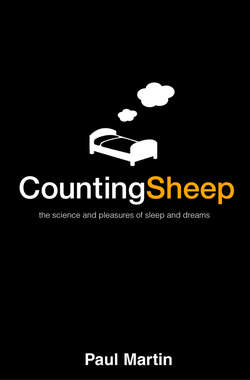Читать книгу Counting Sheep: The Science and Pleasures of Sleep and Dreams - Paul Martin - Страница 9
Half asleep
ОглавлениеAnd the small fowl are making melody
That sleep away the night with open eye
Geoffrey Chaucer, Prologue to The Canterbury Tales (c. 1387)
Sleep is such an overriding biological imperative that evolution has found ingenious ways of enabling animals to do it in the face of formidable obstacles. Nature, it seems, will do almost anything to ensure that animals sleep.
Consider dolphins, for example. They are air-breathing mammals like us, so they must swim to the surface each time they want to take a breath. They would drown if they fell into deep sleep while deep underwater. One possible solution to this biological design conundrum would be to wake up each time a breath of air was required. However, evolution has produced a more elegant solution: only one half of the dolphin’s brain goes to sleep at a time.
Dolphins are capable of what is known as unihemispheric sleep, in which one hemisphere of the brain submerges into deep sleep while the other hemisphere remains awake. The two halves of the brain take it in turns to sleep, swapping at intervals of between one and three hours. This cerebral juggling trick enables dolphins to sleep underwater without drowning, which is just as well considering that they spend a good third of their lives asleep. Unihemispheric sleep has been recorded in several species of dolphins, porpoises and whales, including bottlenosed and Amazonian dolphins, Black Sea porpoises and white whales.
Despite the apparent convenience of being able to sleep and stay awake simultaneously, very few mammals are capable of unihemispheric sleep. The biological benefits of sleeping with only half of the brain at a time presumably outweigh the disadvantages only under unusual conditions, such as those encountered by air-breathing mammals living in the deep oceans.
Unihemispheric sleep is widespread in birds, however. They do it for a. different biological reason. Sleeping with half the brain awake and one eye open allows them to sleep while simultaneously remaining vigilant for predators. In birds, each eye exclusively feeds the visual processing areas in the opposite half of the brain: thus, all the nerve fibres coming from the right eye connect to the left hemisphere of the brain and vice versa. When a bird is in unihemispheric sleep its open eye is the one corresponding to the waking half of the brain, while the closed eye is connected to the sleeping half. If a bird feels relatively safe, it closes both eyes, and both sides of its brain go to sleep.
An experiment with mallard ducks demonstrated how unihemispheric sleep helps birds to stay safe from predators. Four ducks were placed in a row along a perch, the idea being that the ducks at either end of the row would feel more vulnerable to predators than the two in the middle. In the natural world it is generally a bad idea to be on the edge of a group if you might end up as some other animal’s dinner. As predicted, video recordings showed that the outer two birds were much more likely to sleep with one eye open than the two on the inside; their unihemispheric sleep increased by 150 per cent. The amount of unihemispheric sleep rose further when the ducks were shown frightening video images of an approaching predator.
The relationship between unihemispheric sleep and vigilance was finely controlled. The exposed birds on the ends of the row preferentially opened their outward-facing eye – the one directed towards potential danger. From time to time, a bird would turn round and switch eyes, so that the open eye was still the one facing out. Simultaneous recordings of brain activity confirmed that the brain hemisphere corresponding to the open eye was always awake, while the hemisphere corresponding to the closed eye was the one in deep sleep.
The one-eyed tactic was effective: when an attacking predator was simulated on a video screen, the birds sleeping with one eye open were able to react in a fraction of a second – far faster than if they had been in deep sleep with both eyes shut.
Humans are not capable of unihemispheric sleep, although at least one writer has played with the fantasy. Damon Runyon wrote of how he once played cards with a fading champion card player who now lacked the stamina to stay awake during marathon games of gin rummy lasting eight or ten hours. When the man lost a game after making a bad play, the punters betting on him to win clamoured to remove their bets from the next game, on the grounds that he was asleep. Then someone pointed out that the allegedly sleeping player’s eyes were open, so he must be awake. ‘The one on your side is’, retorted one of the backers, ‘but the one on the other side is closed. He is sleeping one-eye.’
